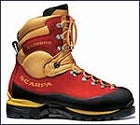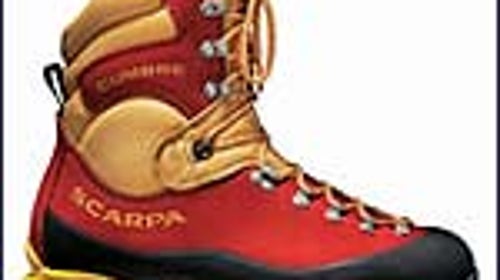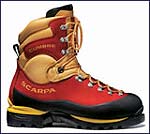I think you’re on the right track, Ciaran. Generally, guides on 22,834-foot Aconcagua advise a sleeping bag rated to minus 20-degree Celsius (converts to minus four Fahrenheit). So if you’re a reasonably warm sleeper, then a zero-degree bag ought to be fine. Besides, you can always wear extra clothing to bed, and I expect you’ll be packing things such as expedition-weight long underwear. Other good bags in this range would include Mountain Hardwear’s Phantom 0 (www.mountainhardwear.com), which uses a higher-quality down than the TNF bag and so weighs a bit less (two pounds ten ounces, versus three pounds ten ounces for the Superlight) but also costs more—$385, versus $249. Or there’s Marmot’s Lithium, another very light bag at two pounds eight ounces ($439; www.marmot.com). But whether it’s worth spending an extra C-note to save a pound is something you’ll have to decide.
 Cumbre
Cumbre
Plastic boots are sort of a reflexive recommendation for Aconcagua, but not mandatory. That said, I think the Freney Pros ($325) may be a little on the light side, insulation-wise. Better to go with a boot such as the Scarpa Cumbre (US$435, but check www.scarpa.co.uk for Euro rates), which has Primaloft insulation, or the Salomon Pro Thermic ($335; www.salomonsports.com), which has Thinsulate insulation. Both boots offer the comfort of a leather boot, with the warmth of a plastic. And of course they’re perfectly fine with crampons. You will, of course, also want to pack some overboots, such as Outdoor Research’s X-Gaiters ($106; www.orgear.com).
Have a great climb! That’s one very big mountain.
Read from the June 2003 issue of ���ϳԹ��� for an indispensable start-up guide to conquering the top 10 North American high zones.


